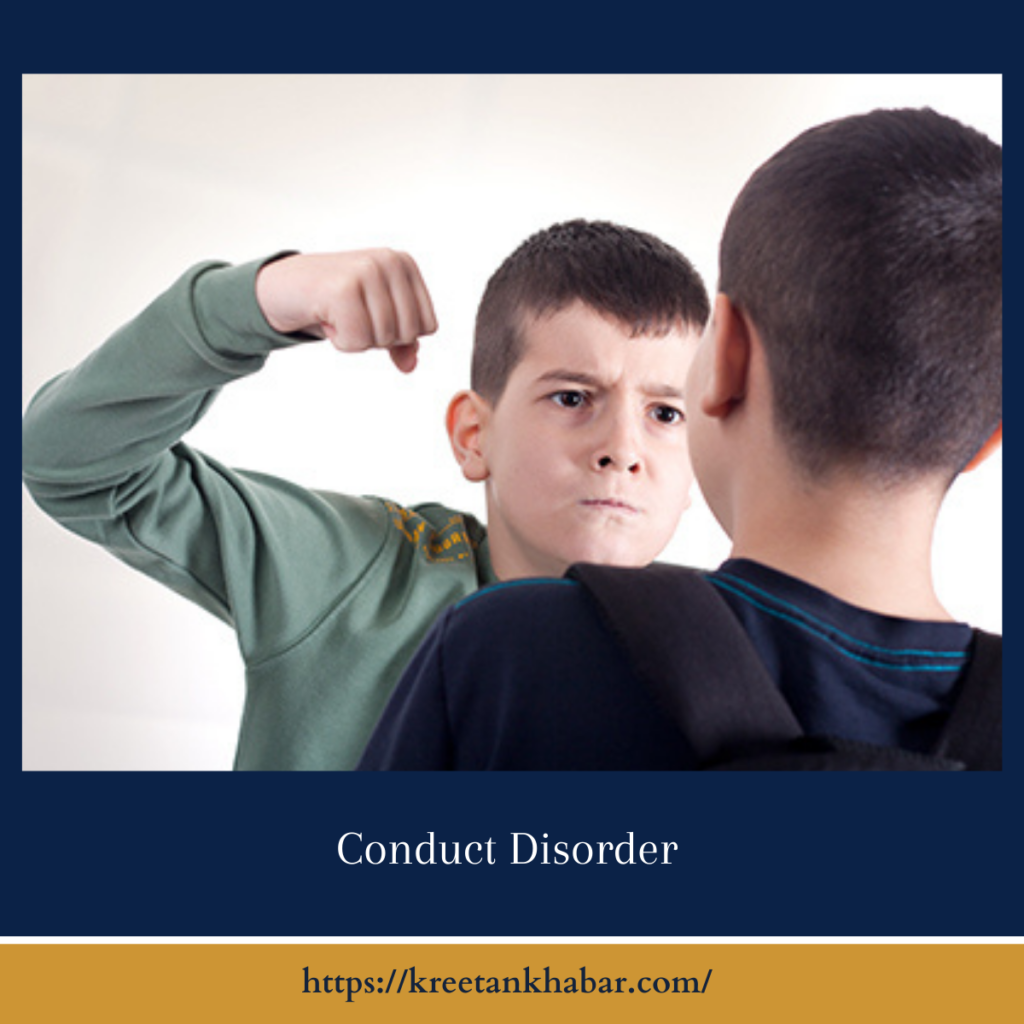Conduct Disorder: Causes, Symptoms, and Interventions
Conduct Disorder(also known as behavior disorder) is a complex mental health condition that often emerges during childhood or adolescence and can significantly impact a child’s behavior and interactions with others. In this article, we explore the intricacies of behavior Disorder, including its causes, symptoms, and potential interventions, to provide a comprehensive understanding of this challenging condition.

What is Conduct Disorder?
Conduct Disorder is a psychiatric disorder characterized by a persistent pattern of disruptive and antisocial behavior that violates the rights of others or societal norms. Children and adolescents with behavior Disorder often display a range of behaviors that may include aggression towards people or animals, destruction of property, deceitfulness or theft, and serious violations of rules. These behaviors can cause significant distress and impairment in various areas of the child’s life, including home, school, and social relationships.
Causes of Conduct Disorder
The exact causes of behavior Disorder are complex and multifaceted, involving a combination of genetic, environmental, and psychological factors. Genetic predisposition may play a role, as children with a family history of conduct problems or other mental health disorders may be at increased risk. Additionally, environmental influences such as exposure to violence or trauma, inconsistent parenting, or disrupted family dynamics can contribute to the development of Conduct Disorder. Psychological factors, including deficits in empathy, impulse control, or emotional regulation, may also contribute to the expression of antisocial behaviors.
Symptoms of Conduct Disorder
Symptoms of Conduct Disorder can vary in severity and presentation, but commonly include a pattern of aggressive behavior towards people or animals, such as bullying, fighting, or cruelty to animals. Children with Conduct Disorder may also engage in destructive behavior, such as vandalism or arson, and exhibit deceitfulness or theft, such as lying, shoplifting, or breaking into cars or homes. They may disregard rules or authority figures, engage in early substance use, and display a lack of remorse for their actions. These behaviors often lead to conflict with parents, teachers, law enforcement, and peers, and may result in legal consequences.
- Animal Cruelty: Children with Conduct Disorder may exhibit cruelty towards animals, such as intentionally harming pets or stray animals. This behavior can be a manifestation of aggression and a disregard for the well-being of others, including animals.
- Vandalism with Purpose: In some cases, children with Conduct Disorder may engage in acts of vandalism with a specific purpose rather than random destruction. This purpose may involve seeking attention, retaliation against perceived injustices, or establishing dominance within their peer group.
- Psychosomatic Symptoms: Children with Conduct Disorder may present with psychosomatic symptoms, such as frequent headaches or stomachaches, as a way to avoid responsibilities or manipulate their environment. These symptoms often have no underlying medical cause but serve as a means of expressing distress or seeking attention.
- Selective Empathy: While children with Conduct Disorder may exhibit a lack of empathy towards certain individuals, such as authority figures or peers perceived as weaker, they may demonstrate empathy towards others, such as friends or family members, when it serves their interests or aligns with their goals.
- Deception for Personal Gain: Deceitfulness is a hallmark symptom of Conduct Disorder, and children may engage in lying, manipulation, or theft to achieve personal gain or avoid consequences for their actions. This behavior may be calculated and strategic, with children displaying a high level of cunning and planning.
- Risk-Taking Behavior: Children with Conduct Disorder may engage in reckless or thrill-seeking behavior, such as dangerous stunts, substance abuse, or involvement in criminal activities. This propensity for risk-taking can stem from a lack of fear or consideration of consequences and may escalate over time if left untreated.
- Social Isolation: While some children with Conduct Disorder may exhibit aggression or defiance towards peers, others may withdraw socially and isolate themselves from social interactions. This isolation may stem from feelings of alienation, rejection, or difficulty forming meaningful connections with others.
- Impulsivity in Relationships: Impulsivity is a common symptom of Conduct Disorder and may manifest in impulsive decision-making within interpersonal relationships. Children may engage in sudden and intense friendships or romantic relationships without considering the long-term consequences or impact on others.
- Rationalization of Behavior: Children with Conduct Disorder often rationalize their behavior to justify their actions and minimize feelings of guilt or remorse. They may blame external factors, such as unfair treatment or provocation, for their misconduct and refuse to take responsibility for their actions.
- Exploitation of Vulnerable Individuals: In some cases, children with Conduct Disorder may exploit vulnerable individuals, such as younger children or those with disabilities, for personal gain or amusement. This exploitation can take various forms, including bullying, manipulation, or coercion, and reflects a lack of empathy and moral responsibility.
Interventions for Conduct Disorder
Early intervention is crucial in addressing Conduct Disorder and preventing the progression to more severe antisocial behaviors in adolescence and adulthood. Treatment approaches typically involve a combination of psychotherapy, family interventions, and sometimes medication. Cognitive-behavioral therapy (CBT) aims to help children develop alternative coping skills, improve impulse control, and challenge distorted thinking patterns associated with antisocial behavior. Family therapy can address dysfunctional family dynamics and improve communication and parenting strategies. In some cases, medication may be prescribed to target specific symptoms such as aggression, impulsivity, or mood disturbances.
Conclusion
Conduct Disorder is a challenging mental health condition that requires a comprehensive and multidisciplinary approach to treatment. By understanding the underlying causes, recognizing the symptoms, and implementing appropriate interventions, healthcare professionals, parents, and educators can support children with Conduct Disorder in developing healthier coping mechanisms and improving their social and behavioral functioning. Early identification and intervention are key in addressing Conduct Disorder and promoting positive outcomes for affected children and adolescents. Through ongoing research, education, and support, we can continue to enhance our understanding and management of this complex disorder.
Read also : Exploring the Delightful Boost of the Green Tea Shot 2023